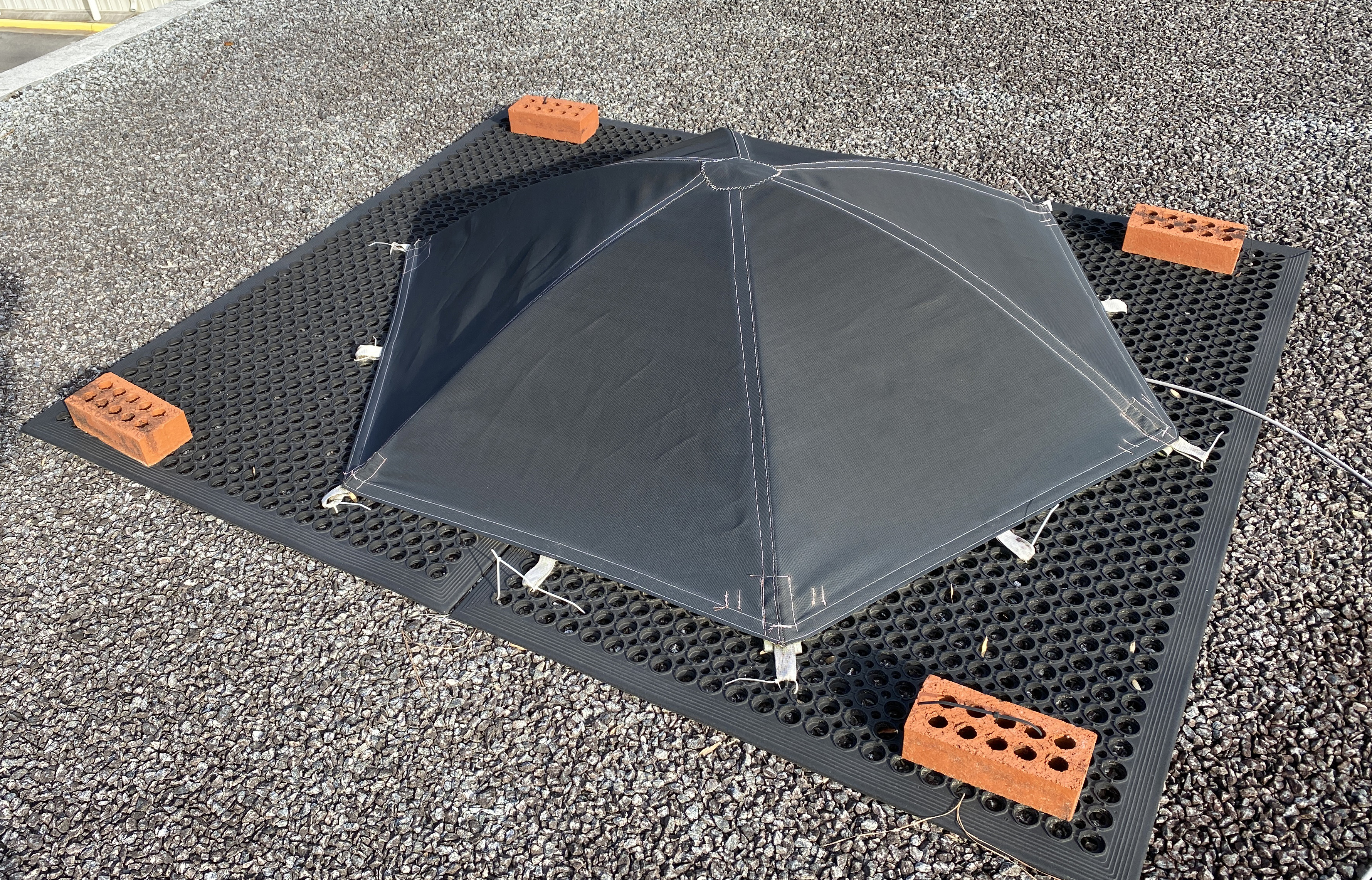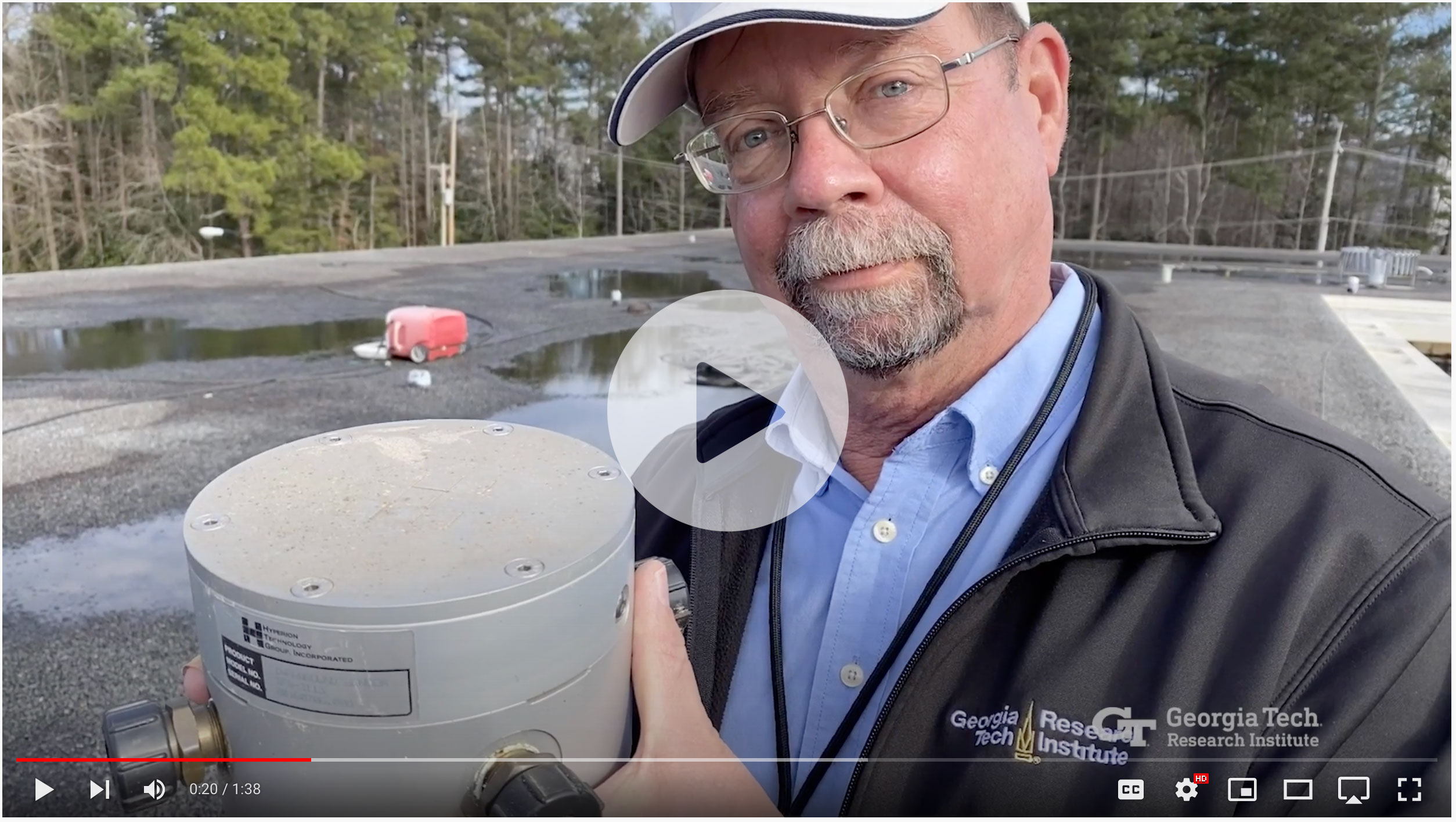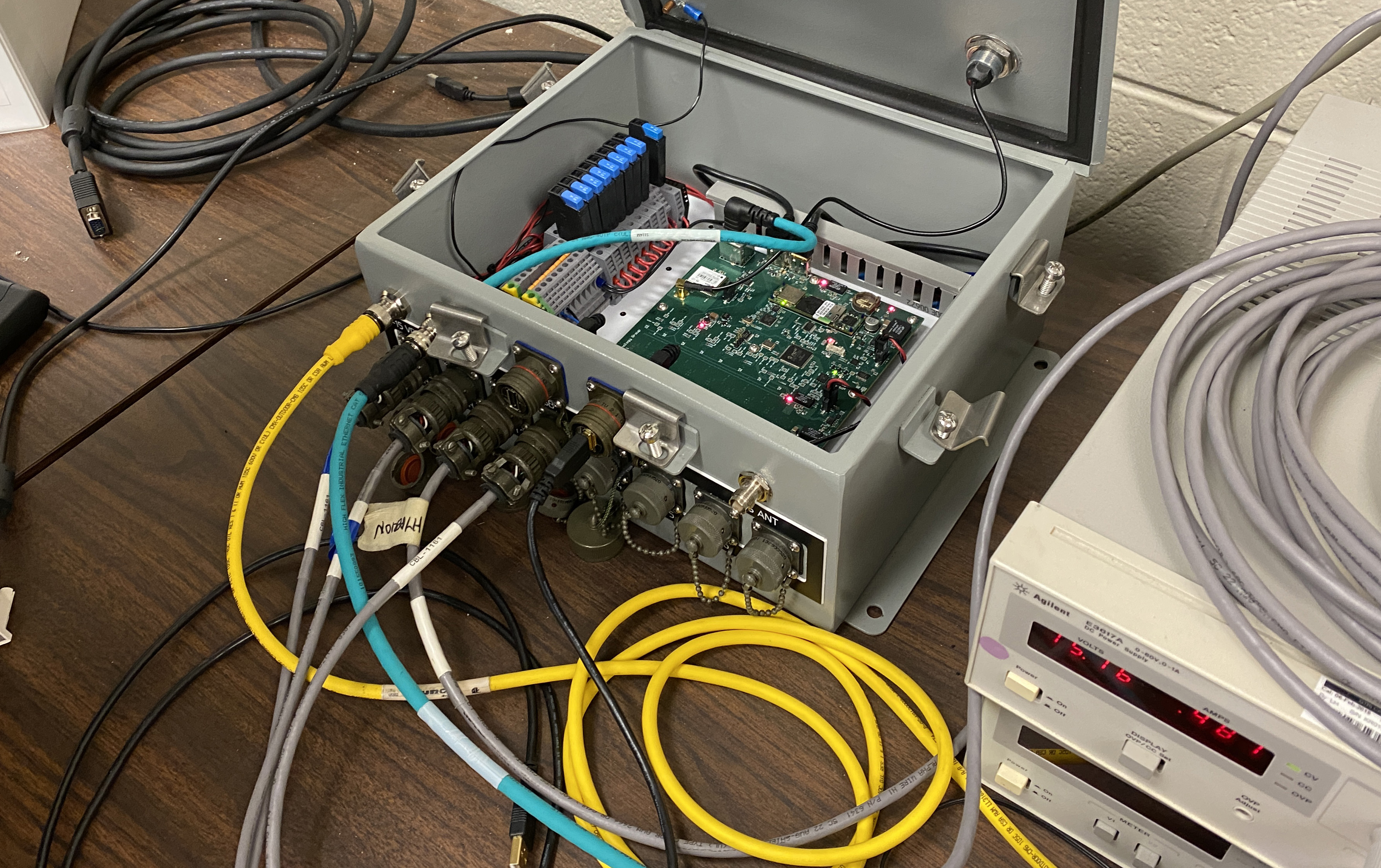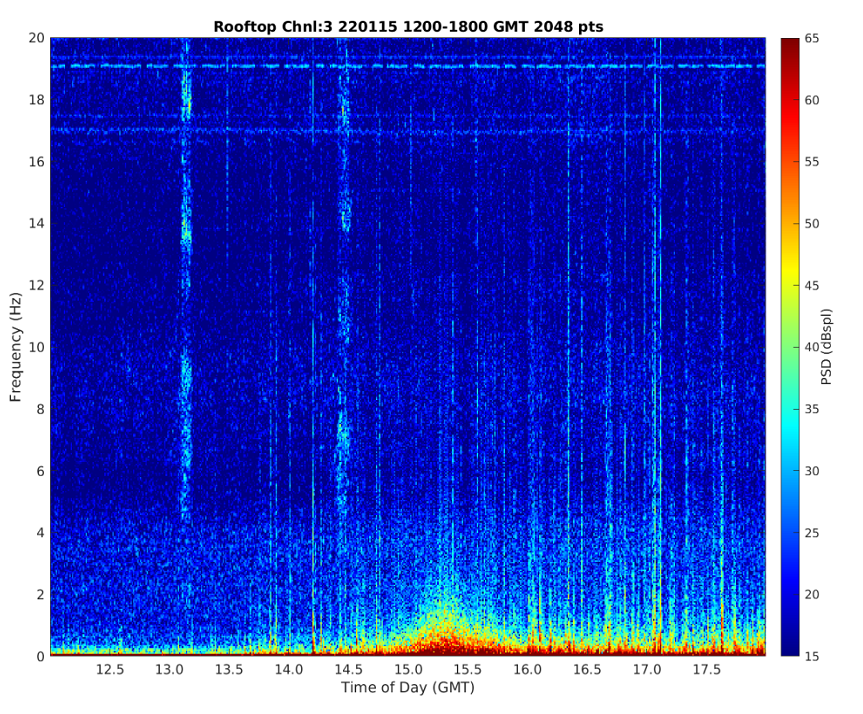
Eleven hours after a massive volcanic explosion rocked the Pacific Island nation of Tonga, sound waves from the blast rolled over the state of Georgia – though not many people beyond John Trostel may have noticed.
Director of the Severe Storms Research Center (SSRC) at the Georgia Tech Research Institute (GTRI), Trostel saw the rumbling sound waves that began with the Tonga blast on instruments at the research center, which is developing new ways to detect severe storms such as tornadoes.

Carried through the atmosphere at the speed of sound, the waves – known as infrasound – can’t be heard by human ears because of their very low frequency. Nevertheless, the first signals from Tonga were detected by an array of sensors located atop a GTRI building as they passed from west to east across the United States. A second wave of signals, originating from the blast and circling the globe in the other direction – crossing Georgia from east to west – failed to register on Trostel’s infrasound instruments for a simple reason: It was drowned out by the sound of rain from Sunday’s storms in Atlanta.
“It was a very, very strong infrasound event and likely the strongest volcanic explosion we’ve seen in the past 30 years,” said Trostel. “Because it was an explosion, spherical waves came out from it crossing the globe in different directions. This was an amazing event to measure.”

The SSRC monitors infrasound continuously as part of a research program designed to develop new ways to protect Georgia citizens from severe storms such as tornadoes, which also produce very low-frequency sound. There’s reason to believe that by analyzing the infrasound produced by tornadoes, forecasters can tell, for instance, how large the violent storms are and if they have touched down or remain in the clouds.
“The reason we are interested in infrasound is that because it is such low frequency, it can travel a very long distance, hundreds or thousands of kilometers,” Trostel explained. “Big things make low-frequency sounds, and some of the biggest things around are storms like tornadoes, hurricanes, and storm fronts. We are hoping to detect and follow severe storms using infrasound.”

The Tonga explosion, estimated to have an explosive yield of 10 megatons – roughly 500 times the size of the Hiroshima bomb – was the first volcanic eruption detected at the SSRC, which began infrasound measurements in 2018 using the GTRI Atmospheric Infrasound Array (GAIA). The array has also detected tornadoes, ocean waves, earthquakes, the movement of trains, rocket launches from the Kennedy Space Center in Florida – and the implosion of the Georgia Dome stadium.
The infrasound is detected by four sensors located on top of a GTRI research building. The GAIA sensors work together to detect the faint pressure waves that are produced by storms, earthquakes, and volcanoes. The resulting data is analyzed using computer systems at the SSRC to determine the frequency content of the signals as well as the direction from which the signals originated. The research is supported by the state of Georgia.

Among the challenges of infrasound measurement is separating the pressure waves that scientists are interested in from simple wind noise. To counter that, researchers typically have been gathering infrasound using an array of soaker hoses, like those used in a garden. Over lengths of perhaps 50 feet, the empty hoses average the wind noise, allowing the infrasound to stand out. But these arrays require large amounts of space, and the hoses often fill with rainwater and insects.
Trostel’s array uses small tents placed over its sensors to reduce the wind noise. Other GTRI researchers are working on mathematical techniques known as wavelets to remove the wind noise during analysis, allowing them to use smaller and more portable measuring devices.
“Our array is getting better and better all the time as we characterize the environment that we are listening to,” Trostel said. “A lot of infrasound arrays are out in very quiet locations, so they see only natural infrasound, but we are interested in more than natural infrasound, so we have to learn to work around things that are creating infrasound.”
Trostel has estimated that the sound waves from Tonga traveled at around 300 meters per second (or 670 mph) on their way to Georgia. The velocity of infrasound waves depends on many factors, including the temperature of the air and the speed of the air mass through which the waves move. Infrasound waves are also bent as they move through different layers of the atmosphere.
Those factors make getting useful data from the infrasound measurements challenging.
“People are looking at the frequency, content, and signals from severe storms, trying to get information from them,” Trostel said. “At this point, we haven’t figured it out yet. There is information there, but we still have to learn how to get it out.”
Writer: John Toon
GTRI Communications
Georgia Tech Research Institute
Atlanta, Georgia USA
The Georgia Tech Research Institute (GTRI) is the nonprofit, applied research division of the Georgia Institute of Technology (Georgia Tech). Founded in 1934 as the Engineering Experiment Station, GTRI has grown to more than 2,800 employees supporting eight laboratories in over 20 locations around the country and performing more than $700 million of problem-solving research annually for government and industry. GTRI's renowned researchers combine science, engineering, economics, policy, and technical expertise to solve complex problems for the U.S. federal government, state, and industry.
Learn more at www.gtri.gatech.edu and follow us on LinkedIn, Twitter, Facebook, and Instagram.



